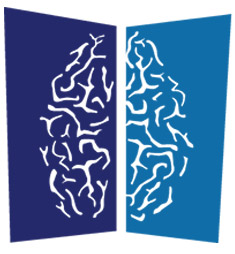Being aware of hydrocephalus is important for the Baby Boomer Generation facing the risk of dementia from Alzheimer’s or Parkinson’s Disease.
Normal Pressure Hydrocephalus (NPH) is a chronic neurological disorder characterized by an accumulation of cerebrospinal fluid (CSF) that causes the ventricles in the brain to gradually enlarge, sometimes with little or no increase in intracranial pressure. This condition, which is commonly seen in older adults, is treated by inserting a shunt into the brain in order to divert cerebrospinal fluid.
With the multitude of hydrocephalus patients treated at ANA alone, it is hard to imagine that there was a time in the not-so-distant past in which hydrocephalus was not considered treatable.
Dr. Salomon Hakim and the History of NPH
The 50th anniversary of the recognition of NPH was commemorated on March 10, 2014. In March 1964, Dr. Salomon Hakim published a thesis on this condition.
He first identified it as a specific syndrome in 1957 at the Hospital San Juan de Dios in Bogota, Colombia and spent the following 7 years formulating his hypothesis. He later collaborated with his son, Carlos Hakim, Ph.D., to design the programmable or adjustable shunt for the treatment of NPH and other forms of hydrocephalus, a device that still bears his name.
In the 1960s, a treatable form of hydrocephalus with specific symptoms, including gait disturbances and dementia, was a controversial claim. Most clinicians did not believe that shunting excess CSF in the brains of affected patients could reverse these symptoms.
Even decades after Dr. Hakim’s research, his story remains largely untold, and many people suffering from NPH remain misdiagnosed or undiagnosed by the general medical community.
During his neuropathology fellowship research, Dr. Hakim performed autopsies on patients who died from central nervous system (CNS) neurodegenerative conditions, such as Alzheimer’s disease. He noted, in many of the cases, the brain ventricles were enlarged without destruction of the brain cortex.
At that time, nobody was able to explain the reason for this observation. This led Dr. Hakim to hypothesize that these patients suffered from what he described as “Normal-Pressure Hydrocephalus” or “NPH,” after finding a 16-year-old living patient with this condition.
Dr. Hakim described his discovery in the foreword to the English translation of his 1964 thesis entitled “Some Observations on C. S. F. Pressure. Hydrocephalic Syndrome in Adults with “Normal” C. S. F. Pressure (Recognition of a new syndrome.)”
Baby boomers beware: Obviously, a diagnosis of Alzheimer’s Disease, Parkinson’s Disease or any one of a number of untreatable dementias is devastating to patients and families. However, sometimes that diagnosis is wrong or patients may have a significant component due to the involvement of NPH.
It is important to understand that today, over 50 years after Dr. Hakim’s discovery, treating NPH is an accepted practice. Diagnosing NPH, however, remains an inexact science. That’s why, according to the Hydrocephalus Foundation, anyone having one or more of three symptoms associated with this syndrome – impaired gate, urinary incontinence or dementia – should be considered for a thorough evaluation for NPH by a clinician experienced in the diagnosis of this condition.

ANA is a team of expert neurosurgeons and medical professionals, who combine their decades of knowledge to provide information, events, and articles on a range of neurological conditions.

